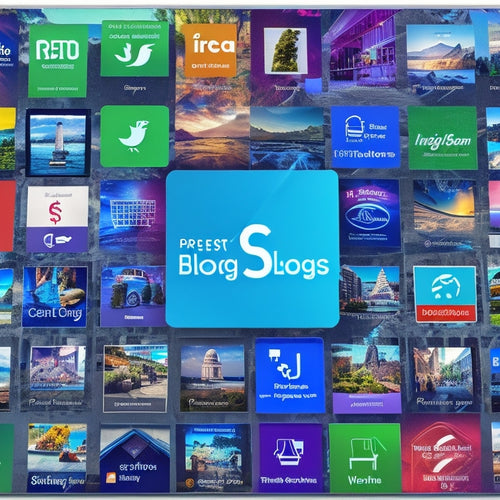
Retail Sales Surge in Latest E-Commerce Report
Share
According to the latest e-commerce report, retail sales surged 2.1% to $289.2 billion in Q1 2024, despite total retail sales decreasing by 0.1% to $1,820.0 billion during the same period. This growth is driven by a shift in consumer behavior towards online shopping, with e-commerce sales accounting for 15.9% of total retail sales. Year-over-year, e-commerce sales experienced an 8.6% growth rate, demonstrating the channel's increasing importance for retailers. As consumer preferences continue to evolve, understanding these trends is vital for businesses to stay competitive and adapt their strategies to thrive in the rapidly changing retail landscape.
Key Takeaways
• E-commerce sales surged 2.1% to $289.2 billion in Q1 2024, indicating a significant shift towards online shopping.
• Total retail sales decreased by 0.1% to $1,820.0 billion in Q1 2024, highlighting the growing importance of e-commerce.
• Online shopping accounts for 15.9% of total retail sales, driven by consumer preferences for convenience and flexibility.
• E-commerce sales experienced an 8.6% year-over-year growth rate in Q1 2024, outpacing total retail sales.
• Retailers must adapt to the rise of e-commerce by investing in digital capabilities and optimizing their online presence to stay competitive.
Retail Sales Growth Trends
According to the latest Quarterly Retail E-Commerce Sales Report, retail sales in the United States have exhibited a mixed trend, with e-commerce sales surging 2.1% to $289.2 billion in Q1 2024, while total retail sales decreased by 0.1% to $1,820.0 billion compared to Q4 2023.
This dichotomy highlights the shifting consumer behavior, as more Americans turn to online shopping. The market dynamics at play suggest that e-commerce is becoming an increasingly important channel for retailers.
Despite the overall decline in total retail sales, the growth of e-commerce sales indicates a continued shift towards digital shopping platforms. As the retail landscape continues to evolve, understanding these trends is vital for businesses looking to stay ahead of the curve.
E-Commerce Sales Performance
The quarterly e-commerce sales growth rate of 8.6% year-over-year in Q1 2024 highlights the resilience of online shopping, which now accounts for 15.9% of total retail sales.
This significant market share reflects the changing consumer behavior, where online platforms are increasingly becoming the preferred choice for shoppers.
The data-driven trend indicates a shift in consumer behavior, with more people opting for the convenience and flexibility offered by e-commerce.
As online shopping continues to gain traction, businesses must adapt to this changing landscape to stay competitive.
Quarterly Sales Comparison
Examining the quarterly retail e-commerce sales, a notable 2.1% increase is observed in Q1 2024 compared to Q4 2023, reaching $289.2 billion. This surge indicates a positive trend in revenue projections, signaling a strong start to the year.
The growth can be attributed to shifting customer preferences, with more consumers opting for online shopping due to convenience and flexibility. The 2.1% increase is a significant deviation from the 0.1% decrease in total retail sales during the same period, highlighting the dominance of e-commerce in the retail landscape.
As retailers continue to adapt to changing consumer behaviors, it will be essential to monitor these quarterly sales comparisons to gauge the effectiveness of their strategies and adjust revenue projections accordingly.
Online Shopping Dominance
E-commerce sales accounted for 15.9% of total retail sales in Q1 2024, solidifying online shopping's growing influence on the retail landscape. This surge in online sales is a reflection of the shifting consumer behavior, as more people turn to e-commerce for convenience and accessibility.
| Category | Q1 2024 |
|---|---|
| E-commerce Sales | $289.2 billion |
| Total Retail Sales | $1,820.0 billion |
| E-commerce Market Share | 15.9% |
The market share of e-commerce continues to expand, driven by changing consumer behavior and increased adoption of digital platforms. As online shopping becomes more prevalent, retailers must adapt to this new reality, investing in their e-commerce capabilities to remain competitive.
Industry Insights and Analysis
Shifts in consumer behavior and technological advancements have propelled the retail industry into a state of flux, requiring a nuanced understanding of the factors driving e-commerce growth. As market dynamics continue to evolve, retailers must adapt their strategies to stay competitive.
The latest e-commerce report highlights the significance of digital transformation in shaping retail strategies. By analyzing consumer behavior and market trends, retailers can optimize their online presence, improve customer experiences, and drive sales.
A deep understanding of industry insights and analysis is essential for retailers to navigate the complexities of the e-commerce landscape and stay ahead of the competition.
Frequently Asked Questions
What Is the Purpose of the Usa.Gov Website?
USA.gov serves as a all-inclusive platform providing government information and citizen services, offering a trusted source of data and resources on demographics, geography, and economic indicators, ensuring public access to reliable information.
How Does the Page Helpfulness Feature Work?
What drives a website's success? The Page Helpfulness feature enables users to rate a page's usefulness, fostering user engagement and providing valuable feedback to refine search optimization and enhance overall user experience.
Why Is There a Privacy Policy Reminder on the Site?
The privacy policy reminder on the site aims to protect users' data and privacy by alerting them to potential privacy concerns when exploring external pages, ensuring proactive data protection and online safety.
What Percentage of Total Sales Were E-Commerce Sales in Q1 2024?
Despite potential concerns about data privacy, Q1 2024 e-commerce sales accounted for 15.9% of total sales, indicating steady e-commerce growth and reflecting shifting consumer behavior trends towards online shopping, as reported by the Quarterly Retail E-Commerce Sales Report.
What Is the Difference Between Adjusted and Unadjusted Sales Figures?
The difference between adjusted and unadjusted sales figures lies in the application of seasonal adjustments, which account for recurring economic trends, thereby providing a more accurate representation of underlying economic patterns and trends.
Related Posts
-

Why Do Customers Abandon Online Shopping Carts?
You're about to lose nearly 7 in 10 online shoppers right at the checkout. Why? High shipping costs are a major turno...
-

Can You Integrate Shopify With Instagram
This article examines the integration of Shopify with Instagram for e-commerce purposes. The benefits of such integr...
-

Why Are Blogs Important in Shopify
The importance of blogs in the context of Shopify is a topic of interest in the field of e-commerce. This article ai...


